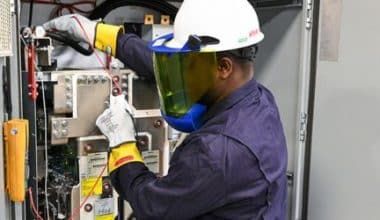Diversity and inclusion go beyond quotas, statistics, and paperwork. By valuing their employees’ differences in skills, experiences, and viewpoints, companies that practice workplace equity gain a competitive edge. Workplaces that actively encourage diversity and inclusion tend to attract and retain a more dedicated workforce as a result. Read on to know more about equity, diversity, and inclusion in the workplace. We also added the training and certificates on diversity and inclusion you can pick from. Let’s dive in!
What Is Diversity in the Workplace?
Having a workforce that is representative of the society in which it functions is one definition of diversity in the workplace. It’s not easy to pin down exactly what characteristics contribute to a diverse team. Although there are an endless number of differences between people, most of us unconsciously limit diversity to a few social categories like gender, ethnicity, age, and so on. The Equal Employment Opportunity Commission (EEOC) enforces laws designed to protect American workers from discrimination in the workplace based on certain protected characteristics. Non-Discrimination Statements and Policies, such as the one adopted by the United States government, often define these social groups as follows:
As stated in Executive Order 13166, “The United States Government does not discriminate in employment on the basis of race, color, religion, sex (including pregnancy and gender identity), national origin, political affiliation, sexual orientation, marital status, disability, genetic information, age, membership in an employee organization, retaliation, parental status, military service, or any other non-merit factor.”
These assertions obviously don’t capture all the ways in which people differ from one another, both in overt and covert ways, but they do serve as useful general categories for helping businesses spot diversity gaps. They also give organizations the data they need to develop strategies for increasing workplace diversity and achieving their goals.
What Is Inclusion in the Workplace?
Although it is frequently used in conjunction with diversity, inclusion is its own idea. According to SHRM, inclusion is “the achievement of a work environment in which all individuals are treated fairly and respectfully, have equal access to opportunities and resources, and can contribute fully to the organization’s success.” Understanding and respect are the cornerstones of an inclusive workplace. Creating a welcoming and safe workplace for all employees requires actively listening to and considering their feedback. Developing a workplace culture where all employees feel they belong and have a voice in decisions is difficult and needs consistent encouragement.
What Is Diversity and Inclusion in the Workplace?
A diverse and inclusive workplace ensures that all employees, regardless of their background or position, feel welcome and appreciated. That “all areas” qualifier is crucial.
How diverse are your hiring practices, your departments, and your executive team? Or, perhaps you work in a company where women make up half the workforce but none of the upper management is female. Do you have a lot of people of color working for you, but they’re all in HR? These probing inquiries expose the level of inclusion and diversity at your company.
What Is the Difference Between Diversity and Inclusion
Diversity and inclusion are related ideas, but they are not the same thing. Diversity refers to the variety of people or characteristics that make up a group. To what extent members of marginalized communities feel welcome and respected in a given setting is a measure of inclusion.
Diversity without inclusion refers to a setting where people of different sexes, ethnicities, nationalities, and sexual orientations and identities coexist but where only the voices of some of these groups are heard or respected. Despite their differences, diversity, and inclusion are mutually exclusive unless a culture is established that welcomes and celebrates unique points of view. A lack of openness in the workplace will stifle any efforts at fostering a welcoming environment. Leaders should make it clear that they value people’s unique viewpoints.
Inclusion is crucial when a company grows more diverse. The goal of any inclusive initiative should be to ensure that every single employee, regardless of who they are or where they came from, feels valued and trusted. Building a diverse and inclusive workplace requires giving everyone a chance to be heard. This includes making sure the Black mother of three in accounting and the non-binary employee in engineering both feel like their opinions matter just as much as everyone else’s.
Equity Diversity and Inclusion
Efforts to promote equity diversity and inclusion in the workplace are gaining prominence in policy discussions at the federal level. A recent survey by the Pew Research Center found that 56% of working-age Americans agree that it is beneficial to make efforts to boost equity diversity and inclusion in the workplace. However, views on DEI diverge widely along ideological and demographic lines.
Most employees have had some exposure to DEI initiatives at their job. Six in ten say their workplace has policies in place to promote equality in hiring, compensation, and advancement, and half report receiving DEI-related training or attending DEI-focused meetings. The percentages of those who claim their company promote equity diversity and inclusion, provides compensation transparency, and supports affinity groups and employee resource groups based on shared identity are all lower than the national average. Those who have access to these tools are more likely to report a favorable influence at their workplace.
Training on Diversity and Inclusion
The importance of a welcoming and diverse workplace environment has grown in recent years, to the point where it is now a major criterion for many job seekers. That’s why many businesses are investing in diversity and inclusion education for their staff. Providing diversity and inclusion training is more than just a formality; it’s about showing employees how much you care about them and how much you care about the company’s bottom line. When people undergo diversity training, they become more aware of their implicit biases and are more equipped to address them.
The following are the certificates in diversity and inclusion:
#1. Professional Certificate – Inclusive Leadership (Catalyst)
To remain competitive, businesses must adapt to the changing needs of their increasingly diverse workforces and customers. That entails going beyond diversity to inclusion, which boosts motivation, creativity, and efficiency in the workplace. Leaders that value diversity and inclusion are able to unlock their teams’ full potential. Catalyst’s Inclusive Leadership Training program will teach you how to work effectively with people who are significantly different from you by utilizing four key traits of inclusive leaders: empowerment, accountability, courage, and humility. This curriculum consists of three distinct classes. If students dedicate 1-2 hours each week to this self-paced course, they can expect to finish it in around three months. You will learn through lectures, debates, and case studies.
#2. HR University – Diversity and Inclusion Certification
To further assist human resources and management professionals in addressing issues of race, gender, disability, culture, bias, and harassment, an online certification program has been developed. This course will teach you how to effectively design your diversity and inclusion activities, write a DEI mission statement, and handle sensitive discussions about diversity in the workplace. To further ensure that you acquire a thorough comprehension of how to conduct DEI initiatives, you will receive instructor feedback on your capstone assignments.
What makes this certification course unique is that you will leave with the skills to lead diversity and inclusion seminars inside your own workplace. It is one of the best certificates in diversity and inclusion you can go for.
#3. Diversity and Inclusion in the Workplace (ESSEC Business School)
Workplaces that are culturally diverse tend to be more productive, creative, and empowering. But there’s another side to differences: friction and discrimination. Diversity and inclusion initiatives are essential for avoiding the pitfalls and reaping the rewards of diversity. This four-part course from ESSEC Business School delves further into concepts like diversity and how people see and react to differences. A lecture, a reading assignment, and a quiz are featured in each of the four modules. It will take you 8-10 hours to finish the course if you spend 2 hours on each module. You must score at least 70% on each quiz in order to earn a completion certificate.
#4. eCornell’s Diversity and Inclusion Certificate Program
Many different types of courses and credentials are available through Cornell’s online learning platform. It’s an excellent resource for acquiring new skills, as it offers over eighty courses in accounting, HR, supply chain, marketing, and more. Its diversity and inclusion training program is one of its most lauded HR initiatives. Executives, business owners, facilitators, facilitators, and supervisors will find this book useful.
The training is designed to teach you how to make your workplace more interesting for your employees. That requires learning about the ways in which other people and your team are affected by institutional, perceptual, and psychological processes. It is one of the best certificates in diversity and inclusion you can go for.
#5. Diversity Works by HRDQ
The company’s aim is to help promote and foster diversity by creating more inclusive and linked workplaces. That’s why they employ a variety of cues to help people start genuine dialogues about diversity through their program.
The curriculum is intended to encourage participation from the students through the use of station-based exercises. The learning styles, available tools, and desired levels of interaction are all taken into account across the board. It’s a program that aims to be both emotionally and socially engaging as well as experientially enriching, and it’s designed with the DEI (Diversity, Equity, and Inclusion) process in mind.
The advocates claim that a few learning objectives are the key to building a diverse team and environment.
Steps to Improve Diversity and Inclusion in the Workplace
The following are the steps to improve diversity and inclusion in the workplace:
#1. Build Up Your Core Diversity and Inclusion Folks
Many businesses designate an executive team to oversee all initiatives related to employee diversity and inclusion. A committee, the executive team, the human resources department, or all of the company’s managers could do this. Your company’s diversity goals and benchmarks should be decided by this committee. They will take charge of these KPIs and be accountable for their success.
It’s crucial to win over the company’s upper management so they can serve as a role model for the rest of the staff. Instruct them on the value of a welcoming and diverse work environment.
#2. Think about How Far You’ve Come
Monitor not only the KPIs your team on diversity and inclusion has settled on but also the effect this has on the morale of your staff. Conduct initial and follow-up surveys with your staff to gauge their reactions and progress. Inquire about their reactions to the following statements and questions:
- How can we as a business better promote diversity and inclusion?
- At our company, we place a premium on diversity.
- Everyone who works for us has a shot at making it big.
- At this firm, I finally feel like I have a place.
- At work, I’m free to be myself.
- Another option is to gather a group of workers together for a roundtable discussion.
You should also chat with new hires (or even customers) about their impressions of the organization.
Reasons Why Diversity and Inclusion Are Important in the Workplace
The following are the reasons why diversity and inclusion are important in the workplace:
#1. It’s Healthy for Company’s Culture
Creating a team whose members push one another to see things from new perspectives is the key to success. Diversity paves the way for individuals to make choices independently and take credit for their efforts. It has the potential to pave the way for a more libertarian and kinder society.
#2. It Fosters New Ideas and Innovations
Talking to individuals from many walks of life is a terrific way to expand your mind and spark new ideas and approaches to problems. It’s a fantastic method for fostering an atmosphere that welcomes new ideas and prevents the pitfalls of groupthink.
The best way to foster innovation is to staff a company with people who bring different perspectives, perspectives, experiences, beliefs, and cultural backgrounds to the table. It’s not easy to come up with new ideas for a product or business when everyone shares the same mindset. As a result, having a diverse workforce will set your organization out from the rest.
#3. It Improves Understanding of Your Customers
With this trove of fresh insights at your disposal, you’ll be able to provide superior service to your customers. A more empathetic culture can be fostered by embracing diversity and inclusion in the workplace. Working with a wide variety of people improves our interpersonal communication skills. This is a fantastic technique to better assist your clientele. Diversity in the workplace improves a company’s ability to communicate and aid customers in various ways, including advertising, customer service, and the quality of the product or service itself.
As a result, more customers will be satisfied and your business will expand.
#4. It Opens the Door to More Mental Health Conversations
Mental health is one of the most overlooked obstacles in today’s workplace. At some point in their lives, everyone struggles with their mental health. The truth is that our mental health and our professional lives are inextricably intertwined. They have profound effects on one another.
Companies with a wide range of backgrounds and perspectives are more likely to be receptive to discussions about mental wellness. When workers have a strong sense of belonging, they are more likely to share their thoughts and ideas. For what reason is this crucial?
The first step toward recovery from mental illness is opening out about it. Teams benefit from having members with different backgrounds and perspectives when it comes to mental health. Workplaces that are inclusive of a wide range of persons and perspectives are better able to promote the psychological well-being of their employees.
Business Benefits of Diversity & Inclusion in the Workplace
Diversity and inclusion in the workplace is not only the right thing to do from a social, political, ethical, and moral standpoint, but it also offers tangible benefits for both the company and its clients or employees. Benefits to business, customer acquisition, and employee retention can result from an approach that actively promotes diversity and inclusion.
What Are the Core Values of Diversity and Inclusion?
Many organizations are working to be inclusive of people of diverse races, ethnicities, religions, abilities, genders, and sexual orientations by emphasizing diversity, equity, and inclusion as core values.
How Do You Demonstrate Diversity and Inclusion in the Workplace?
- Be open about gender pay inequality/equality.
- Be aware of unconscious bias.
- Acknowledge religious and cultural holidays.
- Encourage frequent employee feedback.
- Be aware of ageism and strive for a multigenerational workforce.
Final Thoughts
The concept of diversity refers to the presence of a wide range of individuals within an organization, while the concept of inclusion refers to the promotion of an environment in which all employees feel welcome and able to contribute to and shape all levels of operations, and the concept of belonging refers to the promotion of an atmosphere in which all employees feel safe to be themselves on the job.
Related Articles
- FINANCIAL INCLUSION: Overview, Importance, Objectives, Examples (+ Free PDFs)
- DIVERSITY TRAINING: Definition, Types, Examples and Strategies
- The Role of Savings Groups in National Development in Africa
- RACIAL SENSITIVITY TRAINING: Best Strategies to Promote Diversity and Inclusion
- BUSINESS IN THE NEW NORMAL: 5 Trends Redefining the Business World






